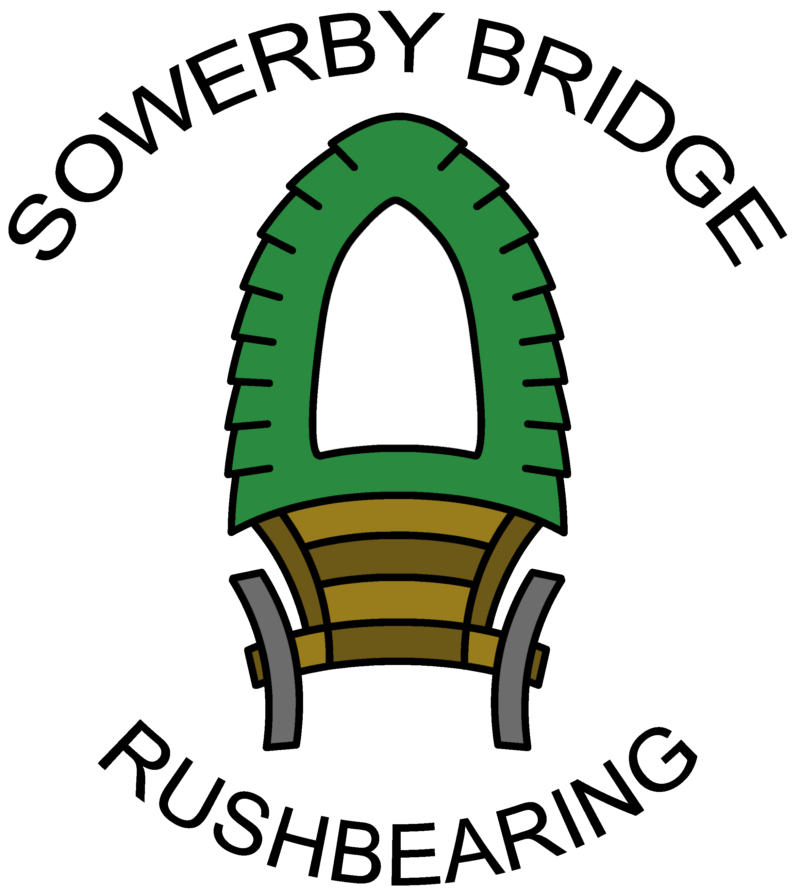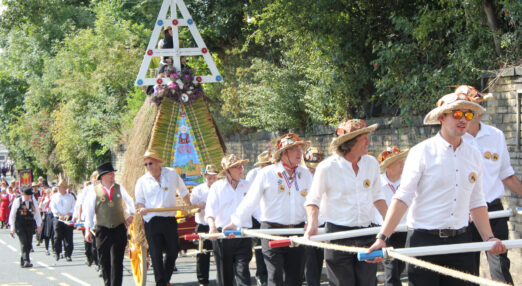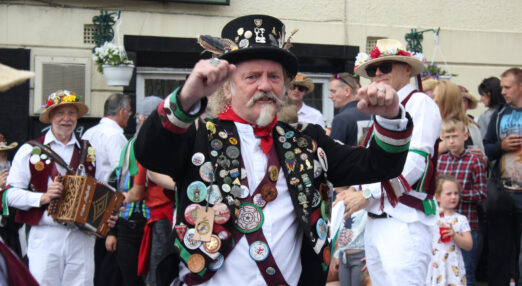Each year, in late summer, the old and rotten rushes were cleared out and new ones taken to the churches. Human nature being what it is, in certain areas this annual necessity developed into an excuse for celebration involving revelry, music, dancing and much drinking of strong ales.
Around the beginning of the 18th century, in some northern counties, it became the practice to decorate the carts full of rushes with flowers, ribbons and silver trinkets. Naturally such a spectacle needed to be paraded and so the format of an imposing ‘rushcart’ as the centrepiece of an extravagant procession became established, often accompanied by musicians and morris dancers. In places, these celebrations continued into the 1800s, long after the need for rushes vanished as the churches acquired stone-flagged floors.
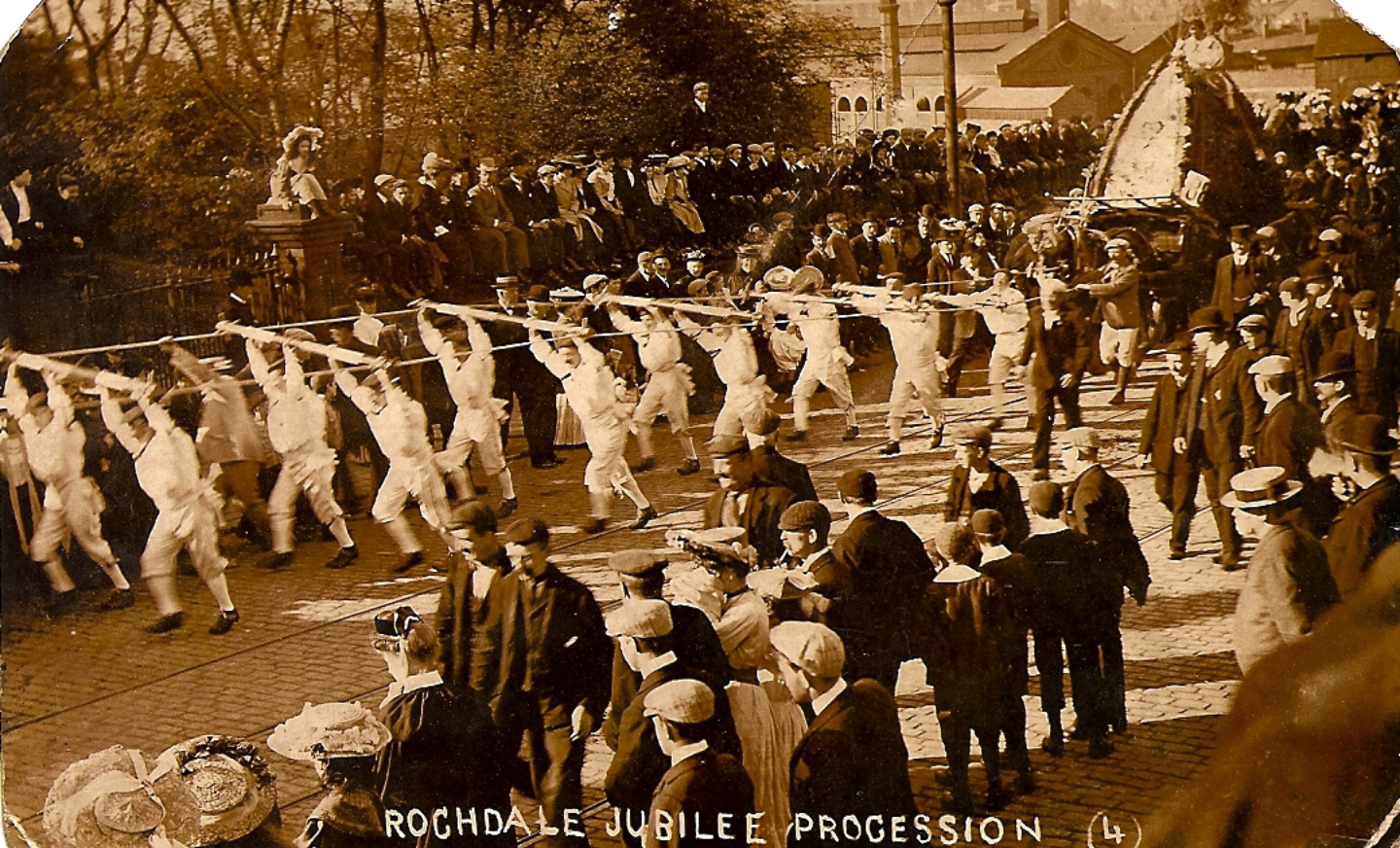
Rushbearing as a practice began to decline from the early 19th century onwards. Locally however, through the early to mid-1800s, rushbearing continued to be celebrated in several local townships including Luddenden and Illingworth. In some places a cart was still a feature – an account of the Ripponden festival of 1842 states that the fun lasted a full week and that a rushcart was pulled through Soyland and Rishworth before finishing up back in the town.
The convention of building a rushcart had died out in most places by the end of the 19th century. Nevertheless, the first decade of the 20th century saw several towns revive the practice, usually to mark some notable civic occasion. Such a cart was built in Sowerby Bridge in 1906 as part of a celebration to mark 50 years of local government. It would be over 7 decades before the town saw another.

The year 1977 marked the Silver Jubilee of Queen Elizabeth II and people up and down the country were looking to commemorate the event. In Sowerby Bridge two men, Fred Knights and Garry Stringfellow, thought that a rushbearing festival on the first Saturday of September would be a fitting celebration. A cart was built based on that from 1906 and a marching band and dance teams were invited to attend. The event was planned as a one-off, however it proved popular enough to repeat.
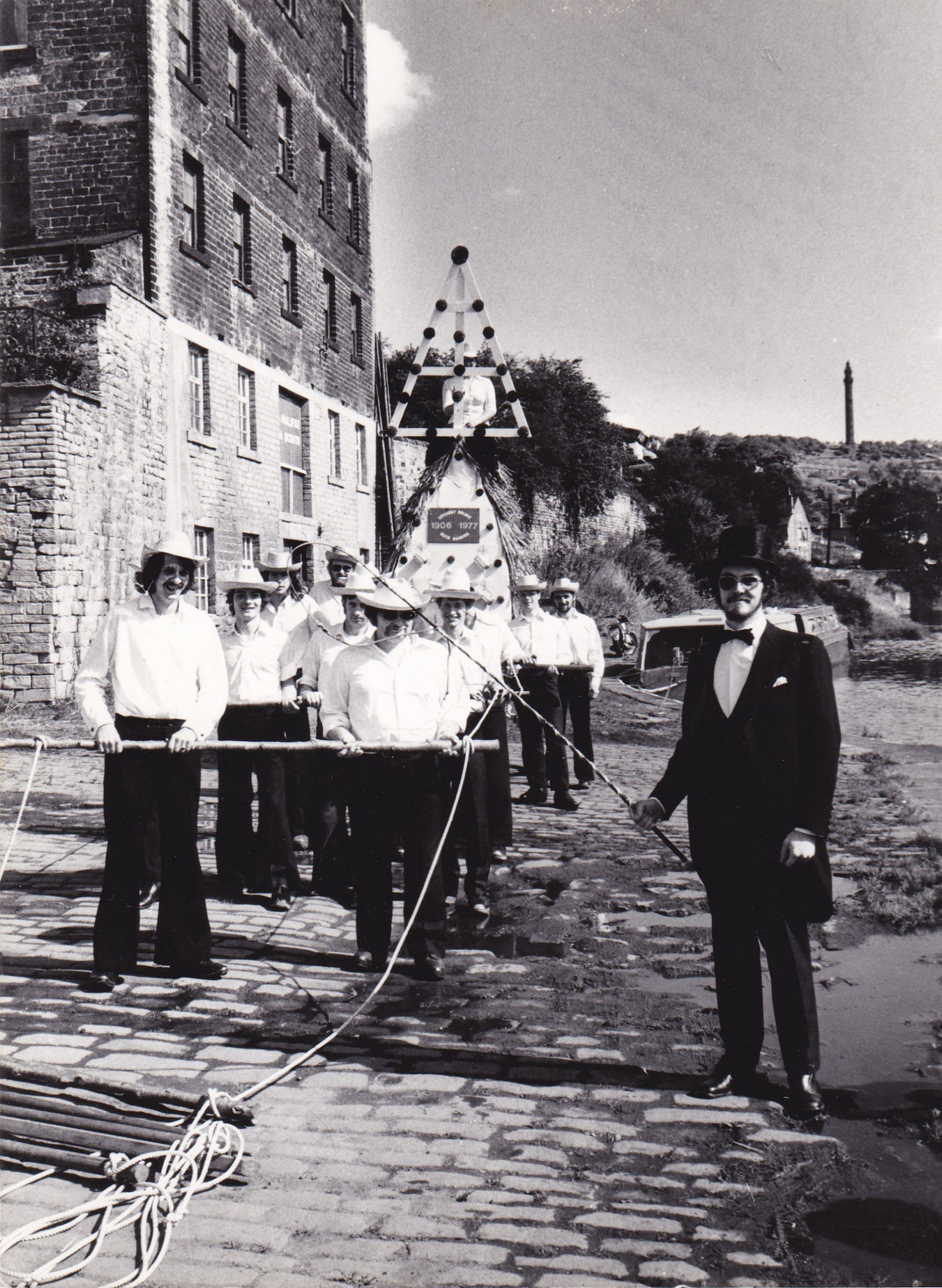
Today the festival has developed into an eagerly anticipated full weekend of celebration involving local churches, community groups, pubs and businesses alongside the spectacle of the rushcart procession, dancing and music.
